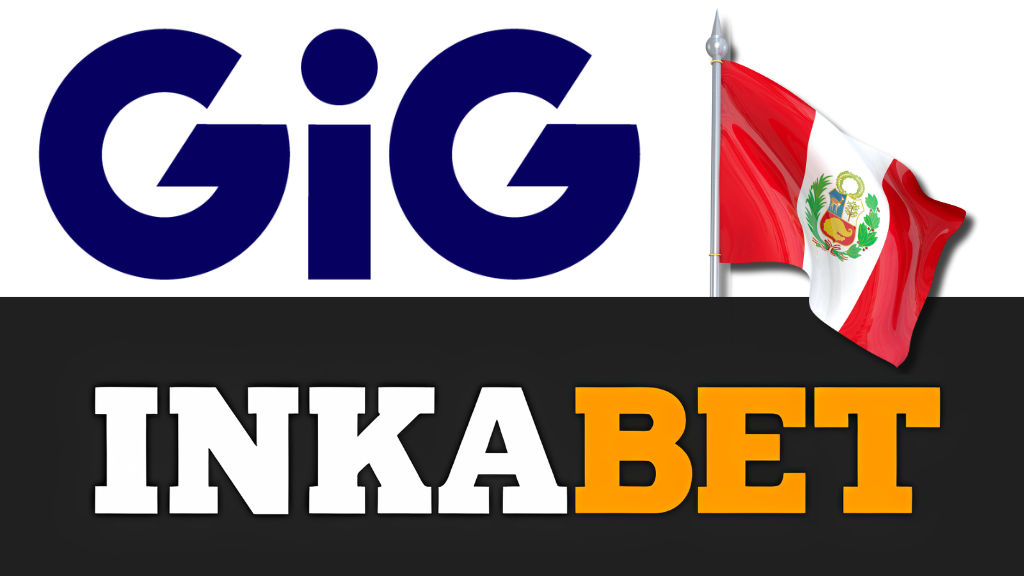You must understand the odds to be able to understand sports betting properly. Regardless of the kind of wager you’re making, they are an essential component, and they help you decide whether to place it or not. An individual’s potential payout is calculated by combining the relevant odds with their stake, while this combination calculates any bet they place.
That page explains some of the factors that determine odds in great detail. Listed here are a few of the factors that determine odds and their respective roles. We also examine the three different formats in which the odds can be expressed, along with the reasons why the odds on the same outcome can differ from one bookmaker to another.
What Are Betting Odds?
It is important to know that odds are used in sports betting for a variety of reasons. In the first place, odds help determine how much a winning wager will reward the bettor. The odds at which a bookmaker offers you a bet will be determined when placing the bet, at which point you will have an idea of how much you can win. If they are higher, then your chances of winning will be higher when compared to your stake.
As a result of odds, any possible outcome will be reflected in the probability of it happening. As a result of higher odds, the likelihood of it happening will be smaller. It makes perfect sense from the betting perspective, as you would expect to win a smaller amount of money from betting on a likely outcome instead of an unlikely one.
In a tennis match, the number one tennis player in the world is matched up against the number 137 tennis player. A player who is considered the best of his kind in the world is likely to be considered preferable to his opponent regarding the odds of winning. Therefore, giving a bet that he would win would be extremely low, whereas his opponent would win a much higher return.
The following explanation of odds in sports betting is somewhat simplified, but it explains the odds and role.
What Types of Sports Betting Odds Exist?
The basic principle that underpins odds is pretty straightforward, as you can see from the example. There are three different methods of computing odds depending on the betting format of the game after all, as follows:
- Moneyline/American Odds
- Decimal Odds
- Fractional Odds
The chances are that each of these file formats will come across your path at some point. It is, therefore, necessary for you to be familiar with each of them. There are no differences between the methods of expressing the odds for a particular bet. The only difference is that they are expressed differently.
Moneyline or American Odds Explained
American or money line odds is the most common format used in the United States, as it is also often referred to as American odds. Depending on the market, these odds can either be displayed positively or negatively. For example, if you wager $100 correctly, you would win $100, whereas if you wager $50 correctly, you will win $50. Therefore, a positive number expresses the amount of money you need to stake to win $50.
It is generally accepted that the odds of +150 indicate that a $100 bet can return 150 in winnings per $100 staked, plus the original $100 stake. Nonetheless, our test results have shown that if we were to observe -150, we would identify that we would have to stake $150 in order to win $100 back in winnings and recoup our $150 stake in the process. Therefore, if you are betting even money (which means that you will win the same amount as your stake), you will see it expressed as +100.
Decimal Odds Explained
Before developing decimal odds, almost all betting on European, Canadian, and Australian markets used decimal odds. Despite this, every major online bookmaker has adopted their system as the standard of operation, except some US bookmakers. In truth, the Indian and Chinese and Western European formats are the most straightforward among the three. It involves the use of a single positive number and is usually expressed to two decimal places.
A number includes the total payout and the original stake per unit staked to give the total payout. For example, it is possible to win a bet at 1.5, in which case the stake of $1 would return $1.50 in total. Likewise, a winning bet at 2.25 would mean that for every $1 staked, an amount of $2.25 would be returned to the speaker. The same application can be applied to a bet at even money, or 2.
Fractional Odds Explained
The United Kingdom is traditionally known for its fractional odds, though decimal odds slowly take over. This approach can be intimidating at first, as you have to calculate potential profits and payouts in a more complicated format than it might seem at first. But it is not as complicated as it might seem. With fractional odds, you can see how much profit you can expect from a wager, just like you would with money line odds. Of course, your original stake should also be added to your eventual wagered amount before you calculate a potential payout.
Odds are expressed as fractions of an amount and are indicated as fractions. In this case, a simple example is 3/1. In this case, we are saying that “three to one” is the rate. Similarly, 5/1 is called a “five to one” rate, and so on. Thus, depending on the ratio, a player has the chance to win three units for every unit staked or five units for every unit staked when the ratio is 5/1.
Adding the following examples to the format makes things more difficult because it includes 6/4, 11/10, and 5/2. The math involved in these examples is, therefore, sometimes not straightforward. If you were to stake on the 6/4, for instance, you would be entitled to win 1.5 units for every 4 units you staked. The odds of winning 11/10 are 1.1 units per unit staked or eleven units for every ten units.
There is nothing worse than having the odds against you on a bet. That is why you are told that the odds against you are always larger than the odds in your favor. These are positive money line odds in the sense that you can do better than the amount you staked. Furthermore, as with the odds on, there is also the chance of other risks being involved as well. In this case, the potential profit is less than the amount staked, and in this situation, it is equivalent to negative Moneyline odds.
If you give an example of odds on, 1/4 of the outcome is said to be “four to one.” The odds for 4/7 are “seven to four,” and so on. Therefore, if you play the 1/4 of a unit, you will be able to win one unit for every four units staked, and if you play the 1/4 of a unit, you will be able to win four units for every seven units staked.
How Decimal Odds Works?
Calculating your payout with decimal odds is quite straightforward: the way to do this is simply by multiplying your wager by the odds associated with the team you are betting on. You might also consider adding in the original wager when calculating winnings.
Calculating Implied Probability with Decimal Odds
- Implied Probability: 1 / Decimal Odds
As an example, taking the example from above, the following equation can be used to estimate Tampa Bay’s implied probability of winning:
Implied Probability: 1 / 2.40 = 41.7%
And Cleveland’s chances of winning:
Implied Probability: 1 / 1.61 = 62.11%
How Fractional Odds Works?
There are those funny-looking odds when you flip the Kentucky Derby on the television, such as 9/5 or 1/2. The pro tip here is that if you want to say fractional odds out loud, such as 9/5 or 1/2, you would say “nine to five” or “one to two.”.
According to the number on the left (9), the author believes that the outcome will fail more times than it succeeds, whereas the number on the right (5) tells us how many times he believes the outcome will succeed.
What Do Fractional Odds Look Like in Action?
I want to suggest that let’s say, the boxer Gennady Golovkin has to fight Canelo Alvarez at 8/13 odds. In other words, given these odds, Golovkin would lose 8 matches out of 21 events (8 consecutive fights + 13 fights) and would win 13 of those situations.
If one wishes to calculate the implied probability of Golovkin winning the fight, one should multiply the number of times he is expected to win by the number of trials (21). As a result, Golovkin has a 61.9% chance of winning the fight.
We are also going to do the same thing to calculate Alvarez’s probability of winning the match. Let us suppose hypothetically that the probability of a fight taking place 19 times (11 + 8) is 11/2, which would mean Alvarez would lose 11 times and win 8 times.
Alvarez has won out on eight occasions, so to calculate the probability of his winning the fight, he divides the number of times he has won by the number of trials (the total number). So, according to the odds, Alvarez has a 42.1% chance of winning the match.
Are you still remembering that we said earlier that the “juice” or the “vig” is the same as the “juice”? The fact that the odds are displayed differently doesn’t change the fact that they are the same. It is worth noting that neither have we considered the probability of a draw, but the sum of the probabilities already amounts to 104, which is more than 100% (61,9 + 42,1).
There is a very high likelihood that x and y together will result in a greater than 100% implied probability, regardless of how the odds are presented. There is, unfortunately, a fee involved in playing.
It will be accurate to calculate your winnings by multiplying your wager by the quotient of 8 * 13 (0.615) to determine Golovkin’s chances of winning the fight (8/13 odds). Thus, the winnings would be composed of your $10 bet multiplied by 0.6175, which would equal $6.15. In such a scenario, you would receive $16.15 back ($10 bet plus $6.15 in winnings).
You will need to multiply $10 by the quotient of 11 * 8 (1.375) if you are interested in betting your $10 on Alvarez. In this case, you would win $13.75 ($10 x 1.375).
If you win the bet, you will receive a payout of $23.75, equal to your stake of $10 plus your winnings of $13.75.
With the underdog, Alvarez, who is the favorite in this fight, wins are greater. Generally, if you bet on underdogs in any sport, you can usually take a lower risk in exchange for a greater reward. Nevertheless, don’t forget that there’s a reason why they’re the underdog. It might be their rookie year, an injury, or the fact that they’re competing with serious opposition.
How Do American Odds Works?
When dealing with American betting odds, it is important to remember that you will see -150, +230, +/- in front of the number.
What Do the + and – Mean in Sports Betting?
Whether you bet on the favorite or underdog, the – and + in a sports betting line can also indicate your potential payout.
For example, the – denotes the underdog, and the + denotes the favorite. Thus, if you want to win $100, you must bet $100 less than the negative number.
If you see an underdog with a positive number, you are looking at the underdog, and the positive number you see refers to how much money you will win if you bet $100.
There are a lot of popular bets in which both sides will have negative odds, including most point spread bets. You will often need to risk more than you profit when betting on the spread because the point spread helps to level the playing field between the two opposing teams.
Calculating Winnings with American Odds
For a $100 win on the Penguins (favorites), you would have to wager $130 on in the first place. On the other hand, the Senators (underdogs) were a good bet. If you had wagered $100 on them, you might use the following formula to calculate the potential winnings if you wish to place any wager at any value. First, the value you wish to wager.
This equation would look something like this if you bet $40 on Pittsburgh (-130):
Cross-multiply to get 130x = 4000, and then solve for “x”
x= 4000/130
x = 30.77
Thus, if you wager $40 on Pittsburgh, you will win $30.77. So, if you wager $40 and win $30.77 plus your winnings, your payout would equal $70.77.
Cross-multiply to get 100x = 4,400, and then solve for “x”.
x = 4400/100
x = 44.00
Consequently, a $40 bet on Ottawa would result in a win of $44 if you were to place it, which would result in an overall payout of $84 had you placed it.
Calculating Implied Probability with American Odds
Generally, it would be considered implied if the odds suggested a certain outcome would occur. It involves the conversion of odds into a percentage, which gives us an idea of the probability that the event we are trying to predict will happen instead of the contrary.
The meaning of an implied probability is that if you estimate that the probability of an event occurring differs from that provided by a sportsbook, you can and should make the appropriate adjustments to your bet.
Consider that you were convinced that one team had a 60% chance of winning, and the implied probability was 52.4%. The bet would seem to be a good one.
If you convert the odds offered by your sportsbook into percentages, the implied probability of all possible outcomes of a game would be higher if you include the “vig.” That is, when you factor in the “vig,” the implied probability will be greater than 100%. The overground that occurs when we remove the vig from betting lines explains how you can get an accurate picture of what the oddsmakers are expecting to happen in the game when we remove the vig.
The following formula can be used to calculate implied probability in theory, but in practice, it can be a little tricky:
Risk/Return = Implied Probability
Odds Can Vary on The Same Outcome – Here’s Why
You’ll find that different bookmakers offer different odds on many wagers that are made at sporting events. So, for example, one analyst might judge a football team to be worth +130 for a match, whereas another might judge the same team to be worth +120 for the same match. Here are some further details to explain why this is the case.
It would be more accurate to say that odds reflect how likely it appears that a particular outcome will occur in the eyes of the bookmaker rather than how likely that outcome is to happen in the eyes of the bookmaker. It’s not an exact science trying to predict how likely any outcome will be in a sporting event, and it’s ultimately a matter of opinion how likely it will be after all.
In this regard, there are many reasons why sports betting odds are variable since not every bookmaker will hold the same opinion on the likelihood of a particular result. Moreover, in addition to the odds themselves, many other factors can affect them, including a bookmaker’s experience on a particular market or their size. Therefore, these figures suggest the odds set by a bookmaker for a wager are not necessarily a reasonable reflection of the true likelihood of the relevant outcome taking place.
That means that if you bet on sports, you have a good chance of putting the odds in your favor. The prospect of consistently turning a profit can be achieved if you can predict the result of sporting events when enough times. While it’s not easy to win at sports betting, you can reach your goal using your knowledge of sports combined with a good grasp of the key aspects of betting.
In the previous section, we talked about some of those key aspects, and hopefully, you now know how odds work and why they vary. The use of odds, which we will explain more about in the next paragraph, is also the principal reason bookmakers make money, as we will point out in the following article.






















